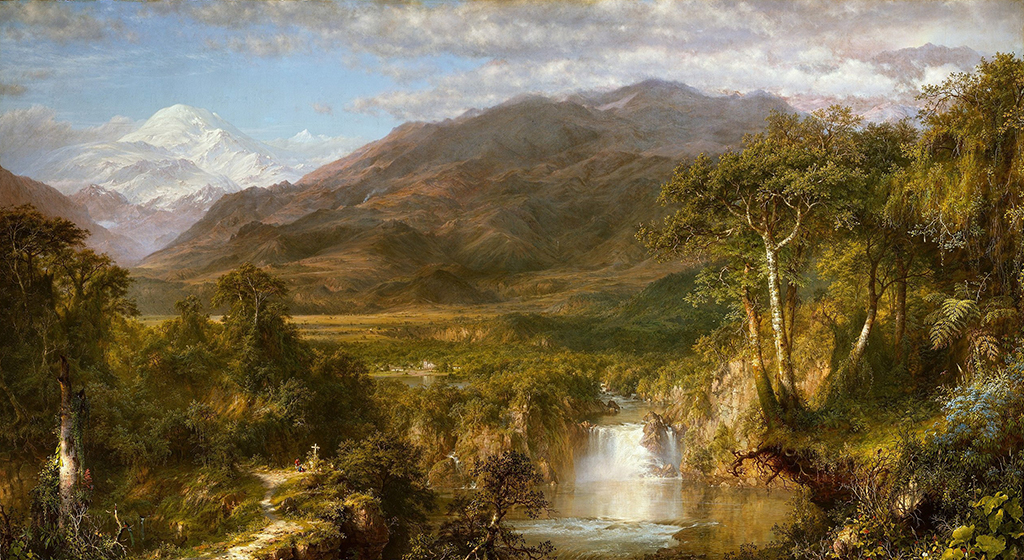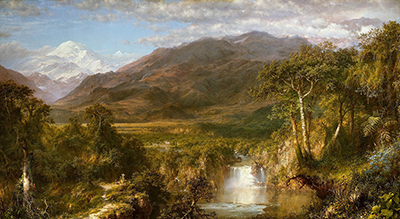The Heart of the Andes was created in 1859 by the American painter Frederic Edwin Church (1826-1900). The large landscape picture stands at five feet high and nearly three feet wide. Depicted in the oil-on-canvas piece, is a romanticised image of the South American Andes, a location Church had visited twice.
The exhibition of the painting was a huge success and established Church as the leading American landscape artist of the time. Pioneer and naturalist Alexander von Humboldt's 1845 book, Cosmos, was a great inspiration to Church. In the sequel of Cosmos, Humboldt credited landscape paintings for influencing studies of the natural world, he described art as the highest manifestation of the love of nature. Humboldt challenged painters to show the physiognomy of landscapes. Church was driven by this challenge and his travels traced Humboldt’s earlier journeys in South America. Cyrus West Field financed Church's travels to Ecuador and Colombia, once in 1853 and then again in 1857. He financed the trips as he hoped the paintings would entice investors to his South American projects.
The Heart of the Andes is a merge of the scenery Church had seen in South America throughout his journeys. In the middle of the picture is a glistening pool of water aided by a waterfall. Ecuador’s Mount Chimborazo snow-topped peak is stood in the background. An observer’s eye is drawn to them by the positioning of closer, darker slopes rising from left to right. Human presence is evident by the inclusion of a trodden path along the river bank, a cluster of homes with a church in the central plain, and further in the foreground, there are two native people stood before a cross. Featured in the painting is a Spanish Colonial, Catholic Church, its positioning appears unreachable from the observer’s location. The bark of a tree in the foreground appears to have Church’s signature carved into it on the left. Interpretations of the signed tree suggest it is the artist displaying man’s capacity to tame an environment. Although the tree looks to be in bad health, in comparison to the vibrant jungle it is surrounded by.
Church's landscape follows the artistic ideologies of the picturesque, advocated by British theorist William Gilpin, which starts with a watchful observation of nature that is then enhanced by certain concepts of harmony and configuration. The connections between irregular and smooth forms was a significant principle. These characteristics can be seen in The Heart of the Andes. Shown by the toothed mountains and rough trees, contrasting with the serene pool of water and rounded hills. The painting is arguably Church's most famous art piece and has been displayed at the New York’s Metropolitan Museum of Art from 1909 onwards.





